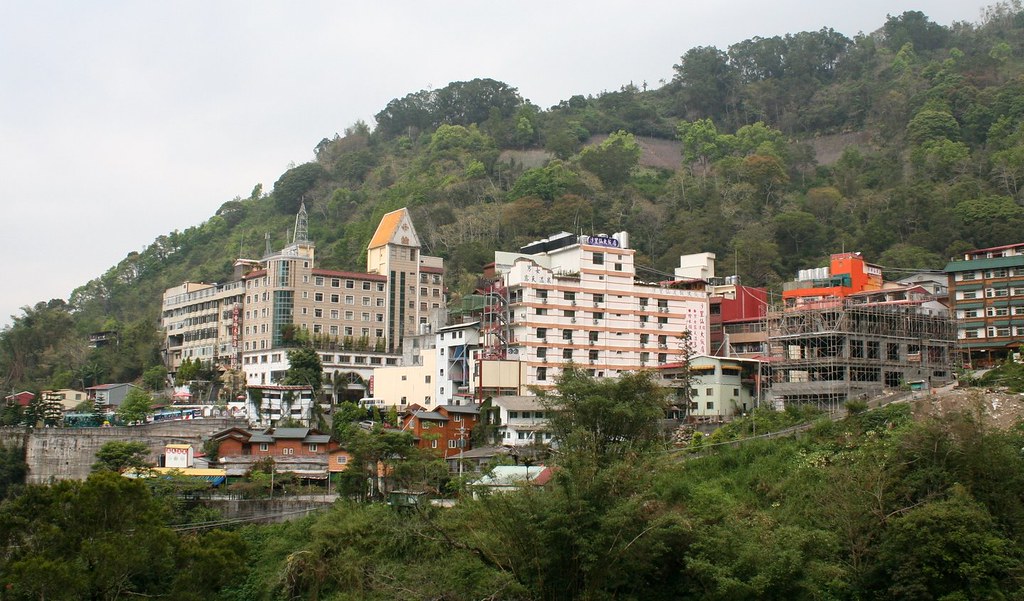
We leave Dongpu (elevation 1100m), a small hot spring village set in glorious mountain scenery, at 9am. It’s not a terribly early start but we'd gone out drinking and eating the night before (carb loading as one member called it) and still needed to sort out our packs in the morning. We grab one last meal at a local breakfast shop and then head out.
My hiking companions are Richard, founder of Barking Deer Adventures, Dave and Mai, two geophysicists from England, now living in Vietnam, and Stephen, who works in the IT industry in Kaohsiung. Everyone is a keen and experienced hiker. Our differing professional and social backgrounds will make for great conversation over the next week.
A cold front was predicted to blow in during the night, but it’s pretty mild outside, if misty. I’m hopeful that with our easterly direction we will avoid the rain predicted for later in the day.
The trail begins just outside the village, and starts to climb steeply almost immediately At first we are on tarmac and then dirt. Despite our heavy packs we still overtake scores of daytrippers heading up to the Yunlong and Yinyu waterfalls.

As Taiwanese tend to be, they are friendly and want us to stop and join them. But we have a long day ahead of us.
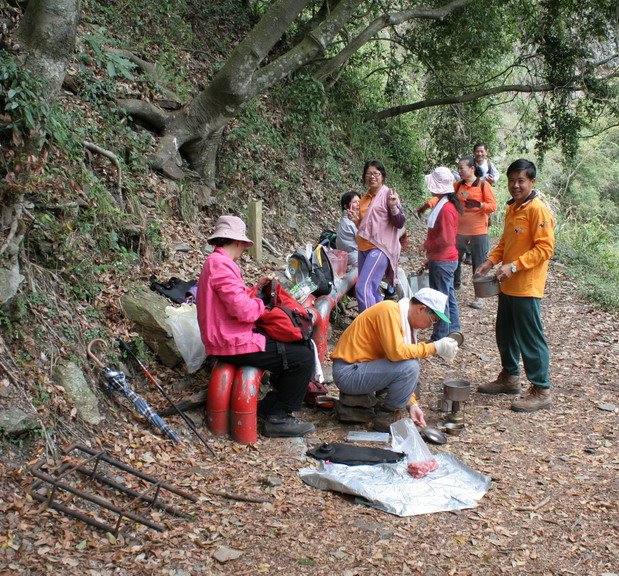
In the first hour we passed this little snack shop. It’s the last chance for a can or bottle or aiyu jelly until Yuli.
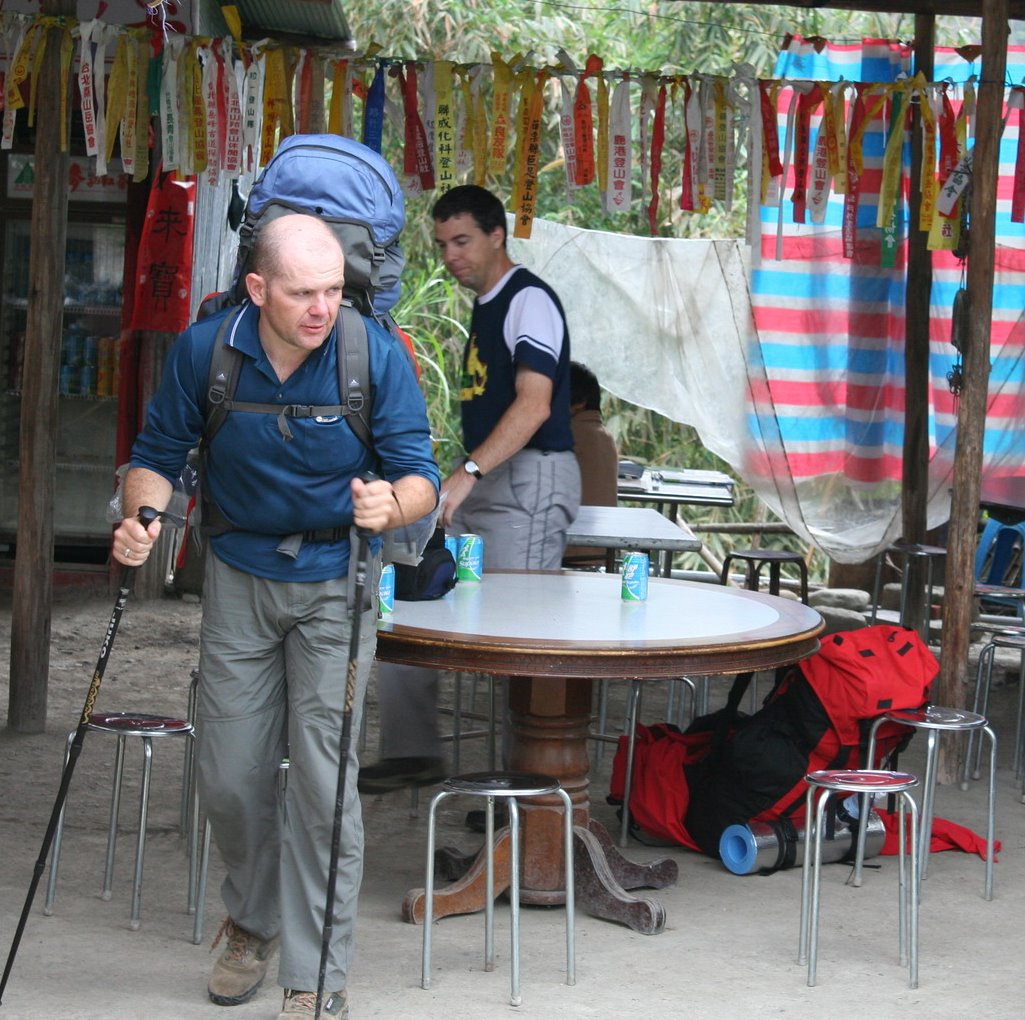
The trail then cuts right into the side of a ridge with sheer drops to the Chenyoulan River Valley. Metal bridges span streambeds, ravines, and sections where the trail has been washed away. The slopes are so steep here that any washout makes the trail impassible without a bridge across it.
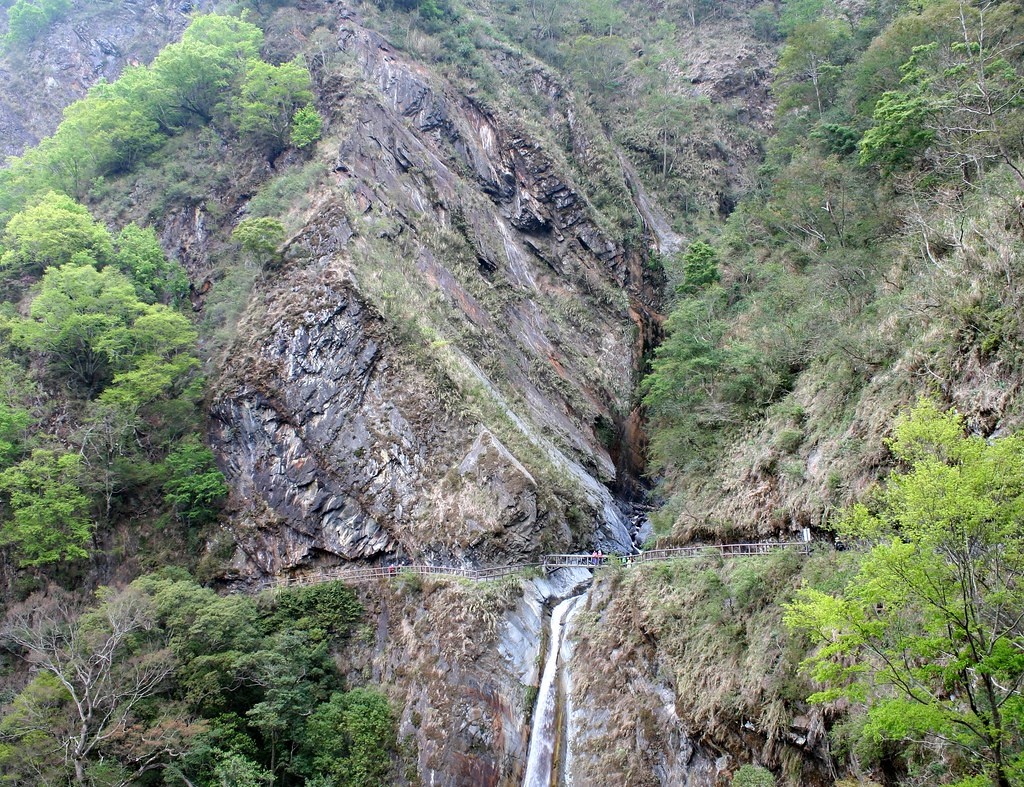
To emphasize just how precarious the ridge is the Chinese have named it the Father and Son Ridge, as in even a father could not help his son here in the event of an accident.
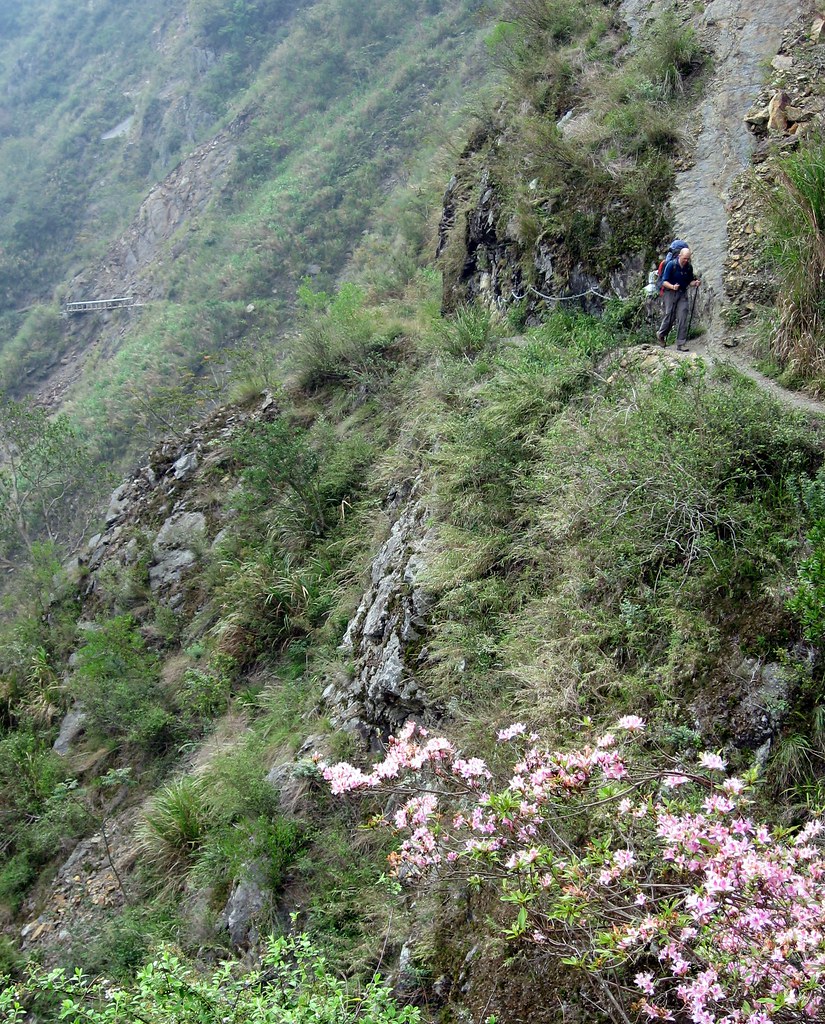
I ask Dave, who is a geophysicist from England, to describe the local geology. He proceeds with an impressively detailed report: The Chenyoulan Valley below is a major fault and the side we are walking on is metamorphosed sediment around 50 million years old. On the other side are un-metamorphosed sediments roughly 10 million years in age. Because we are over a fault, the rock strata is very broken up, which is why the ridge is so steep and prone to landslides.
“You can tell all that just by looking?” I asked.
“No,” he laughs. “I read the sign back there.”
Though cut into the ridge, the trail is for the most part wide and clear, and our view alternates from deciduous forests of camphor, machilus and blue oak, to misty views across the river valley. In fact, all day long we will simply be heading up the valley.

We lunch around noon at a small clearing with a wooden shelter. There was a little mailbox for dropping off reports of bear sightings. What do the bears do when they see us?

Mango Man:
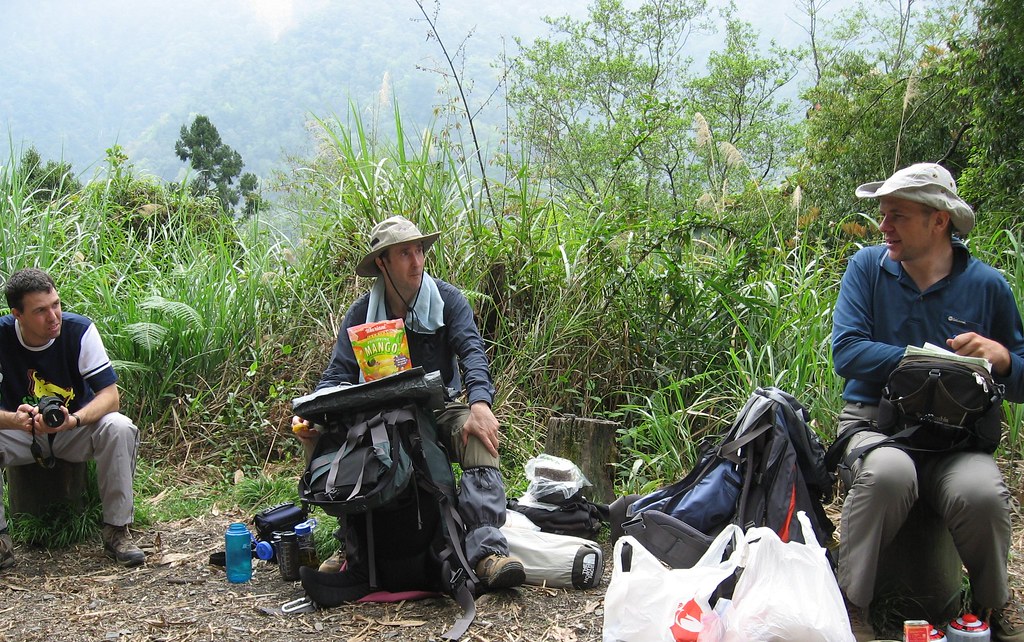
Six hours into the hike there is a noticeable change in the vegetation, from deciduous to coniferous trees. You don’t even need to look up to see this for the trail is now covered in a soft layer of needles whereas earlier it had been a bed of leaves. There is still a picnic grove feel about the area though: soft colors, clear trail, and a warm inviting forest cover.

There are no daytrippers on the trail now, but no serious hikers either. We hear many birds, but don’t see them. It’s been hazy since we left Dongpu and the higher we ascend the foggier it gets. I’m a bit disappointed, as I’m really hoping for some big landscape shots to make carrying my Canon Digital Rebel worthwhile.
But there are some interesting shots of the fog filled forest to capture:

By 5pm I am really feeling the weight of my pack. Guanggaoping (elevation 2580m) is just another km ahead. Then 500m, then 200m, then 200m again, then…we reach the flats and nearly break down to discover that the cabin is actually down a side trail another 600m east. We’ve reached the site of an old police station, an important strategic spot of control along the old trail, but not a place to spend the night.
Fortunately, the path to Guanggao Cabin (elevation 2490m) is downhill and we cover it quickly.
The cabins (there are three structures) are actually the ugliest of all the overnight shelters along the trail and should be replaced with something more modern. The bunk bed frames are good thick cedar, and have nice thick black foam mattresses, but the structures are bare concrete with lots of wall cancer and mold.
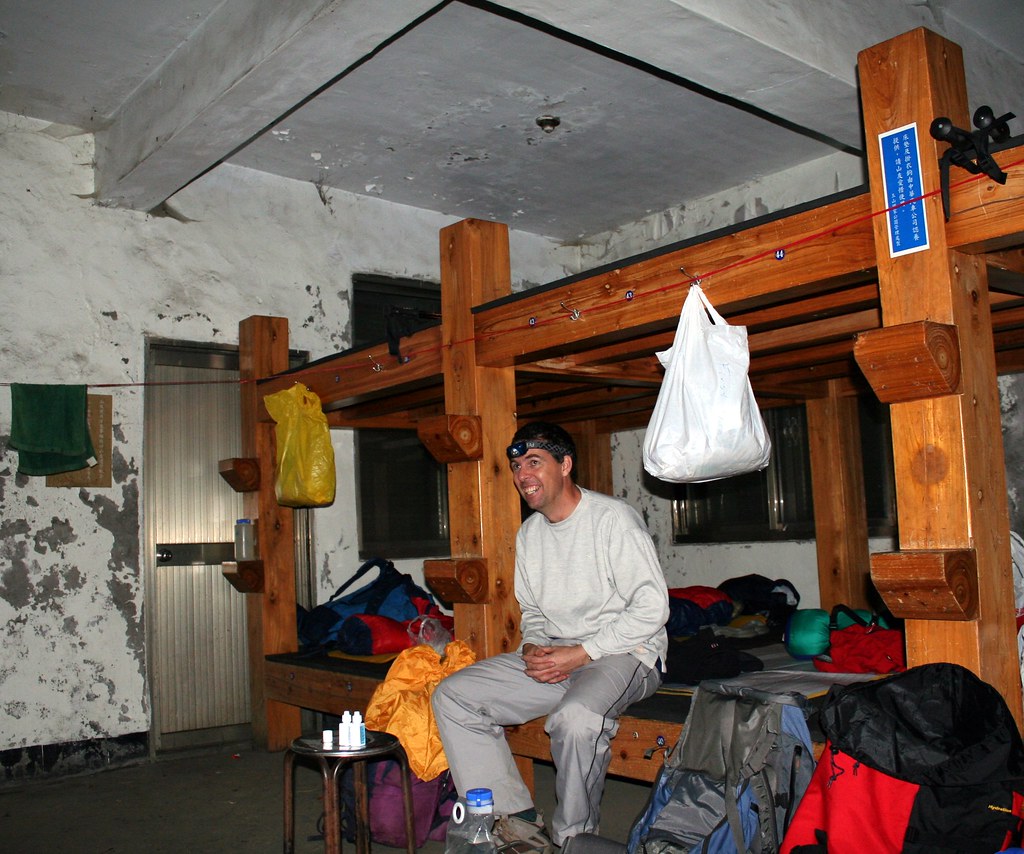
It’s a lovely setting though on bit of terraced meadowland overlooking another deep valley (we’re on the opposite side of the ridge now). We’ve arrived in time to watch a sea of clouds roll in.
Click here for Day Two.
Practicalities:
There are small streams for water every hour or two along the trail so there is no need to carry more than 2L at any time. The cabin has running water, toilets, and lighting. We arrived around 6pm, having hiked about 8 hours, not including breaks.
In Dongpu, we stayed at the Youth Activity Centre (4-bed rooms NT1000-1700). Dongpu is a small village, with a cobbled main street lined with shops, restaurants and hot spring hotels of varying quality. It’s the sort of place where across from one of the best hotels in town you can witness a young waitress bashing a fish to death on the side of the road, and then to carrying it into the kitchen for cooking.
During Japanese times, Dongpu was famed as a hot spring spa. Today, the waters still flow and there are about 20 hotels to choose from, some with outstanding mountain views. I don’t have the name of it but there’s a fantastic looking new resort perched over a deep valley half a kilometer before town. Accommodation is in 2 story wood cabins.

3 comments:
I just head the whole report. Fantastic. Great photos and a great looking hike. Thanks for sharing.
"Later that night, Dave and Mai make a strange discovery: our right feet are all wetter than our left. No one really understands why."
Are you all right-handed? Could you be leading with your right foot through dewy grass?
Robert, this is the kind of of thing I'd be doing if I wasn't so damned busy.
For now, I'll live vicariously through you, in more ways than one.
Bravo man.
Post a Comment